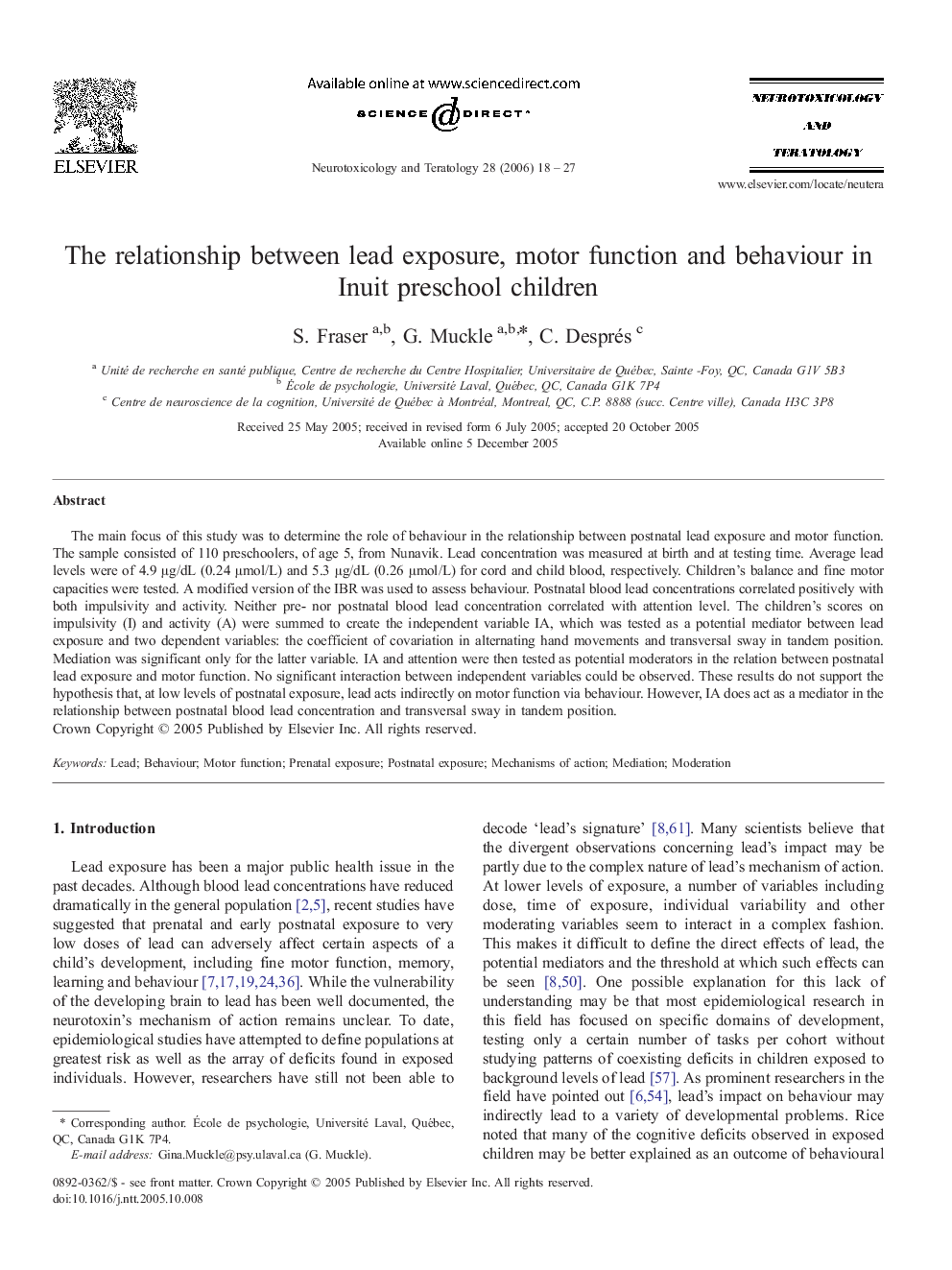| Article ID | Journal | Published Year | Pages | File Type |
|---|---|---|---|---|
| 2591888 | Neurotoxicology and Teratology | 2006 | 10 Pages |
The main focus of this study was to determine the role of behaviour in the relationship between postnatal lead exposure and motor function. The sample consisted of 110 preschoolers, of age 5, from Nunavik. Lead concentration was measured at birth and at testing time. Average lead levels were of 4.9 μg/dL (0.24 μmol/L) and 5.3 μg/dL (0.26 μmol/L) for cord and child blood, respectively. Children's balance and fine motor capacities were tested. A modified version of the IBR was used to assess behaviour. Postnatal blood lead concentrations correlated positively with both impulsivity and activity. Neither pre- nor postnatal blood lead concentration correlated with attention level. The children's scores on impulsivity (I) and activity (A) were summed to create the independent variable IA, which was tested as a potential mediator between lead exposure and two dependent variables: the coefficient of covariation in alternating hand movements and transversal sway in tandem position. Mediation was significant only for the latter variable. IA and attention were then tested as potential moderators in the relation between postnatal lead exposure and motor function. No significant interaction between independent variables could be observed. These results do not support the hypothesis that, at low levels of postnatal exposure, lead acts indirectly on motor function via behaviour. However, IA does act as a mediator in the relationship between postnatal blood lead concentration and transversal sway in tandem position.
